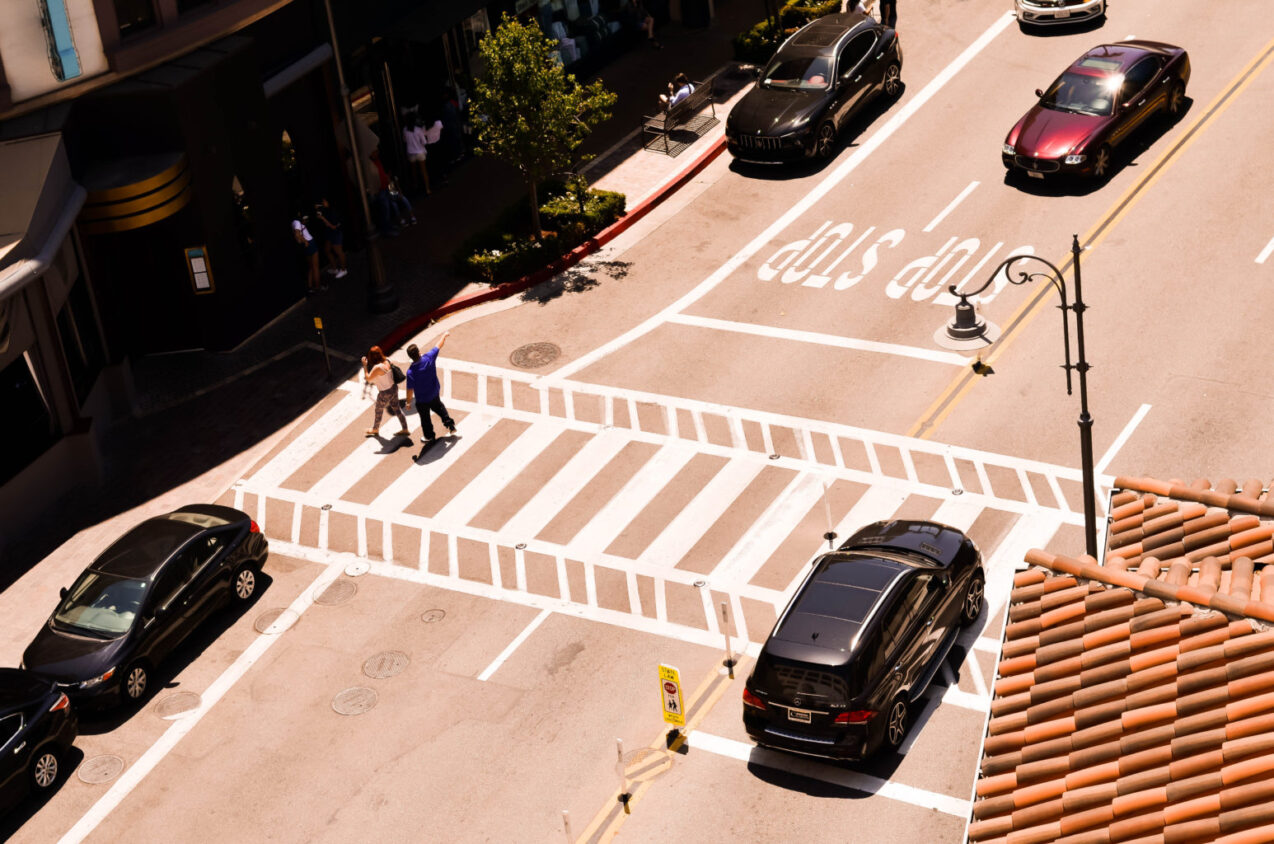In an effort to identify solutions to improve the lives of older adults and people of all ages and abilities, the USC Leonard Davis School of Gerontology and UCLA Luskin School of Public Affairs, with the support of AARP, recently conducted surveys of diverse, older Angelenos, exploring their travel patterns, use of technology, and the mobility problems they face.
“We united on one common goal, the importance for understanding community needs, opportunities, and barriers that can support, create and sustain livable and age-friendly communities in Los Angeles,” said Nancy McPherson, State Director of AARP. “We know that the more connected and engaged people are with their community, the more likely they are to age successfully and remain living in their homes for as long as possible, as the vast majority wish to do.”
Isolation and loneliness
In recent years, there has been a growing focus on the consequences of loneliness and isolation, especially among older adults. While adoption of technology and social media has the potential to reduce isolation, issues such as cost, disinterest and lack of the skills needed to use various devices may hinder older adults’ adoption. Los Angeles’ ethnically, linguistically and geographically diverse population of older adults made it an ideal location for the USC Leonard Davis School of Gerontology to explore how this population uses technology and the extent to which they believe it can improve connectivity and reduce isolation.
The USC research team conducted six focus groups in English, Spanish and Korean at (SBSS) with 48 older adults living in a low-income area of Los Angeles, home to a diverse, largely immigrant population. Key findings from this report, “Aging in Place in Los Angeles: Recognizing Challenges to Social Connectedness,” include:
- A relatively high use of some technology among this engaged group, as well as a wide range in social connectivity with family, friends, and members of the community;
- Although some older adults did not have the resources or the desire to use technology, others used mobile phones, smart phones, tablets, and computers – either in combination or alone – for purposes of contacting their family and friends, accessing health care information, getting the news, shopping, and watching television;
- Cost, disinterest, and lack of the skills needed to use various devices hindered older adults’ adoption of technology and social media;
- Many older adults indicated a reluctance to adopt newer technology because they preferred to communicate in-person and they expressed concerns that technology is too complicated or too expensive; others used it for entertainment, to plan local and long-distance travels, and to communicate with their loved ones.
“Our findings suggest that although technology isn’t a cure all for loneliness, it can be a tool in the tool box for addressing social isolation. Policy makers and tech developers need to consider how older adults currently use technology, how it can better suit their needs, and barriers that prevent them from using it effectively,” said Kate Wilber, USC Leonard Davis School of Gerontology professor. “We are thankful that AARP and our UCLA collaborators recognize the importance of addressing social isolation and look forward to working toward solutions that benefit older adults in Los Angeles and beyond.”
For more information on USC’s “Disrupting Isolation in Housing for an Aging Population,” click here.
Mobility and transportation challenges
The UCLA research team focused on identifying mobility and travel patterns by conducting focus groups and interviews with 81 older adults in the neighborhoods of Koreatown, Westlake and East Hollywood, including adults visiting St. Barnabas Senior Services (SBSS), a local organization that provides health and social services. The UCLA report, “Bolstering Mobility and Transportation Options for Low-Income Older Adults,” found that:
- Participants expressed difficulty in getting around, often endure long transit trips and uncomfortable or scary walking environments and social hazards that could cause them to trip and fall, significantly reducing their independence and quality of life.
- For many, walking around their neighborhoods is the primary mode of transportation; however, there are significant physical and social impediments that constrain mobility.
- A small number own cars and many rely on family and friends to drive them. Use of point-to-point travel services (e.g., taxis, ride-hailing services) is rare and constrained by finances.
- Many lack competency with technology to order ride-hailing services.
- Mobility constraints affect the number and frequency of trips.
- Differences exist among study participants in regard to the numbers of social and recreational trips. Older adults visiting SBSS take a larger number of daily trips and have a higher likelihood of making social and recreational trips than those who are not visiting SBSS.
“Mobility affects the quality of life. Decreased mobility means also decreased access to city amenities or jobs, and socialization opportunities, as well as a higher risk for social isolation. Our findings suggest that certain improvements both in the physical environment and in the transit and paratransit services can help increase the mobility of low-income, older adults, and we articulate these improvements in our report,” said Anastasia Loukaitou-Sideris, Associate Dean of the UCLA Luskin School of Public Affairs. “We are welcoming the opportunity to join forces with the AARP and our USC colleagues and advocate for more age-friendly California cities.”
For more information on the UCLA Lewis Center for Regional Policy Studies report, “Bolstering Mobility and Transportation Options for Low-Income Older Adults,” click here.
AARP’s livable communities work supports the efforts of neighborhoods, towns, cities and rural areas to be great places for people of all ages. The AARP Livable Initiative states that communities should provide safe, walkable streets; age-friendly housing and transportation options; access to needed services; and opportunities for residents of all ages to participate in community life. To learn more, visit AARP.org/Livable.
Top photo: Blake Mullins/Shutterstock





